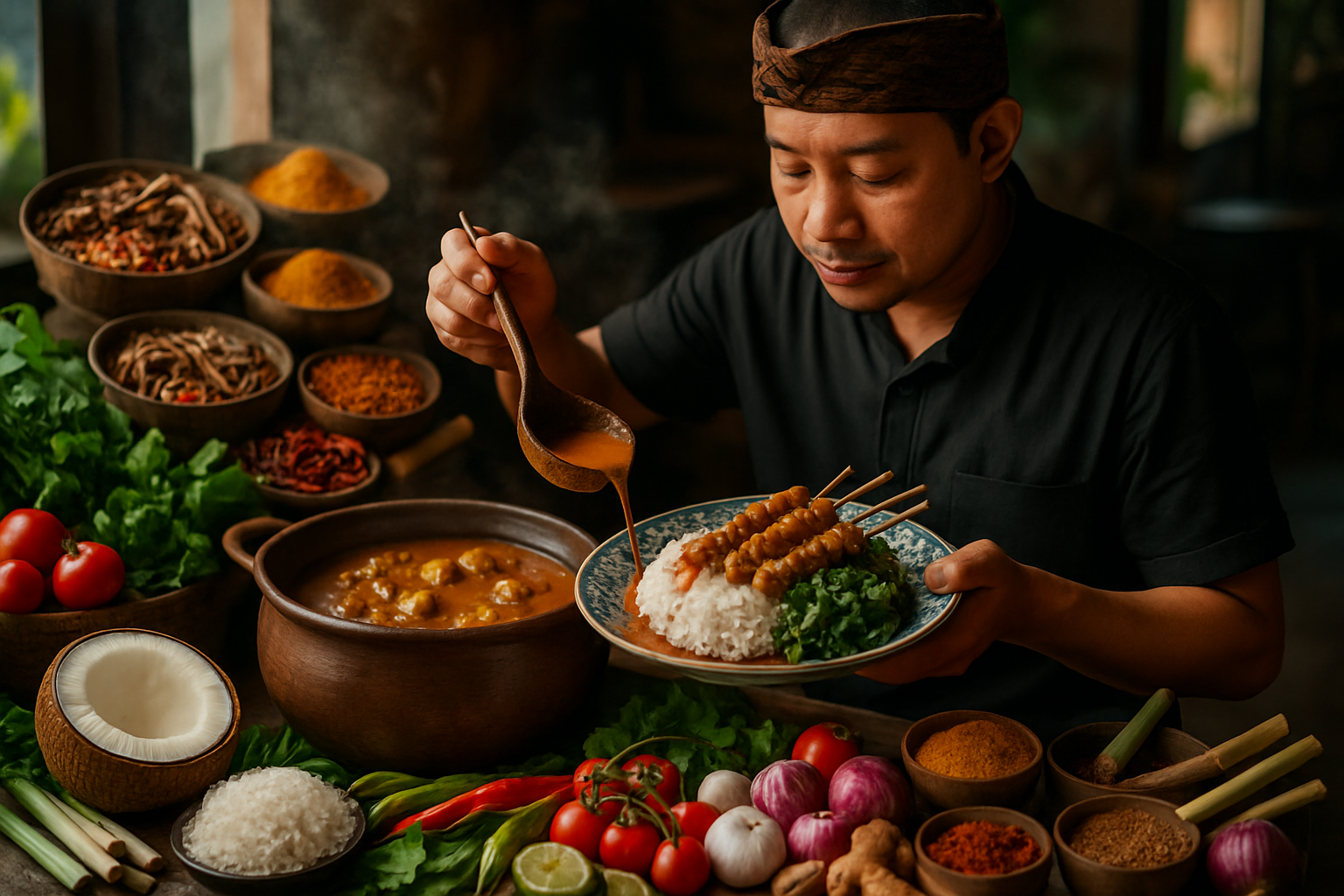Discover the Aromatic Allure of Indonesian Cuisine: A Journey Beyond Satay
Indonesia, the world's largest archipelago, is a melting pot of cultures, and this diversity is mirrored in its cuisine. Bursting with rich flavors, vibrant colors, and a wide range of ingredients, Indonesian cuisine is a culinary adventure waiting to be explored.

Section 1: A Rich Tapestry of Flavors
Indonesian cuisine is a symphony of flavors, with sweet, sour, salty, and spicy elements often present in a single dish. Central to many Indonesian dishes are spices like turmeric, galangal, and lemongrass, as well as fiery chilies for those who like a kick. The food is also characterized by the use of aromatic herbs such as basil, coriander, and pandan leaves.
Section 2: The Art of Rendang
Rendang, a slow-cooked meat dish in a richly spiced coconut milk sauce, is a shining example of Indonesian cuisine’s complexity. Originating from the Minangkabau ethnic group in West Sumatra, Rendang is often served at ceremonial occasions and to honor guests.
Section 3: The Street Food Scene
Street food is an integral part of Indonesian culinary culture. From the sizzling satay stands to the fragrant nasi goreng (fried rice) stalls, every street corner is a feast for the senses. A must-try is gado-gado, a salad of blanched vegetables, tofu, and tempeh, doused with a sweet and tangy peanut sauce.
Section 4: The Joy of Jamu
Jamu is a traditional Indonesian herbal drink believed to have healing properties. Made from natural ingredients like turmeric, ginger, tamarind, and honey, Jamu is not only delicious but also contributes to overall wellness. It is a perfect example of how food and health intertwine in Indonesian culture.
Section 5: The Sweet Side of Indonesia
Indonesian desserts, often made from rice, palm sugar, and coconut milk, are a delightful end to any meal. Try klepon, vibrant green balls of glutinous rice filled with palm sugar and coated in grated coconut, or es teler, a refreshing fruit cocktail with avocado, coconut, jackfruit, and condensed milk.
Delving Deeper: Insights into Indonesian Cuisine
-
Indonesian cuisine varies greatly by region due to the country’s cultural diversity and geographic spread.
-
The staple food in Indonesia is rice, which is served in many forms, including steamed, fried, or as a porridge.
-
Indonesia is one of the world’s largest producers of nutmeg, which is native to the Banda Islands in the country’s eastern region.
-
Tempeh, a fermented soy product, originated in Indonesia and is a popular protein source, especially among vegetarians and vegans.
-
A typical Indonesian meal consists of a main dish of meat or fish, a side of vegetables, and a bowl of soup, all served with rice.
Indonesian cuisine is a culinary journey through an archipelago of flavors. The diverse range of dishes, the vibrant street food scene, and the deep connection between food and wellness offer a refreshing perspective on how we view and experience food. So, why not take your taste buds on an adventure and explore the aromatic allure of Indonesian cuisine?






